provided by:
Priscilla Sokolowski
Eugene, OR
Photos from personal trips AND trips with
“Birds of Oregon and General Science” (BOGS)
Priscilla’s
Bird photography




BOGS Delta Ponds along river
Mar. 8, 2018
Bird List compiled by Janet Naylor
Bird list for BOGS walk at south Delta Ponds, from bicycle bridge west along the river then along the south ponds to the westernmost pond. March 8, 2018, 9am.-11am. Weather 50deg., rainy, fairly strong wind gusts.
- Pied-billed grebe
- Double-crested cormorant
- Great blue heron
- Canada goose
- Domestic goose
- Mallard
- Gadwall
- Wood duck
- Green-winged teal
- Bufflehead
- Lesser scaup
- Common goldeneye
- Northern shoveler
- Ring-necked duck
- Bald eagle
- American coot
- Glaucous-winged gull
- Anna's hummingbird
- Northern flicker
- Black phoebe
- California scrub jay
- American crow
- Tree swallow
- Violet-green swallow
- Cliff swallow
- Bush tit
- Pacific wren
- Bewick's wren
- Ruby-crowned kinglet
- Yellow-rumped warbler
- American robin
- Spotted towhee
- Song sparrow
Other than birds: Lots of beaver chew, mostly on large trees (both conifers and cottonwoods), but also a lot of small saplings in one area.
When we first started the bird walk it was already raining. None-the-less, people seemed to be in good spirits. My Sony camera is very sensitive to getting wet - it acts up for days. So I made a comment to someone that I didn't think I'd get many pictures today. I don't usually do that well at Delta ponds anyway. But you can brush all that aside because there are 37 pictures and some of them are quite fine. I'm thrilled. And I'm sure you'll enjoy them.
I must say my attitude about rainy days is much worse than most people in our group. People just don't seem to mind the rain. Though really I am only talking about the people who made the choice to come out on this bird walk in the rain. You would think that after living in Oregon for 42 years ... I would be acclimated to it, but actually I have always avoided the rain whenever I could, and I was in a position which allowed me to take a walk on a sunny day in the afternoon if we had a sun break, so I managed to get along okay through our wet season. I've done more walking in the rain since joining BOGS in 2012, than I ever have before. I could use the excuse that my camera and gets Persnickety in the rain - and it does but really I just don't like being out in it. When I lived in Pullman, on the far Eastern edge of Washington state, The Winter temperatures were lower much of the time, but the humidity was also much lower. One actually feels colder here at 34 degrees and 100% humidity than I felt in Pullman at 28 degrees and 60% humidity.
There were lesser scaup in the distance on the river and ring-necked ducks and a pied billed grebe. Before joining the group on the bridge Mary Lee and I heard what we thought was a Bewicks wren. I didn't see it but she might have tracked it down. I know one ended up on the official bird list kept by Janet and so did a song Sparrow which I also remember hearing. There was also a Pacific Wren singing in the brush along the river. Now Mary Lee is another example; she came all the way down from Oakridge to go birding in the rain. Gotta give her credit, which I did.
And let's talk about the lighting. I shoot in manual mode these days which means there are three settings to adjust for each picture. Normally you really don't have to change things that much unless your subject changes from a dark brush to a bright sky. But this day the sun came out for a tiny while then stormy clouds came rolling back, rain came and went and came and went, and along with all this, it got bright and then dark again and again. For just about every picture I had to twist all the dials. I've been going out photographing and just practicing making these kind of adjustment so today felt like a kind of a final exam. Well, I got a lots of poorly exposed pictures due to poor settings, and you'll see that even a couple of the ones I'm displaying are not the optimum brightness.
There were two bald eagles at the big pond. People still always enjoy seeing Bald Eagles. One was an adult at the far north end of the pond in a snag where we often see a raptor of some kind. I didn't photograph that one until we got a lot closer and it was still perched there. The other was flying in the bright sky pretty high up. It turned out to be an immature with lots of white in the armpits and along the undersides of the wings.
As we walked along the River from the bridge we could see the Lesser scaup a little closer and it stopped raining long enough for me to pull out my camera. I thought the birds were still too far away for anything good. But lo! I captured a green irridescence on a Scaups head even at that distance, and in that dim lighting.


Lesser Scaup. Lesser and Greater Scaup are somewhat difficult to tell apart. The main difference is the profile of the top of their heads. The Lesser Scaup has a raised area towards the rear of the head while the Greater Scaup has a raised area closer to the forehead. This never feels entirely convincing to me but it seems to work if one can get enough of a side-view of the bird.


Canada Goose, flying low and fast. I panned these Geese as they flew through my field of view and my shutter speed was short enough to freeze the wing motion.

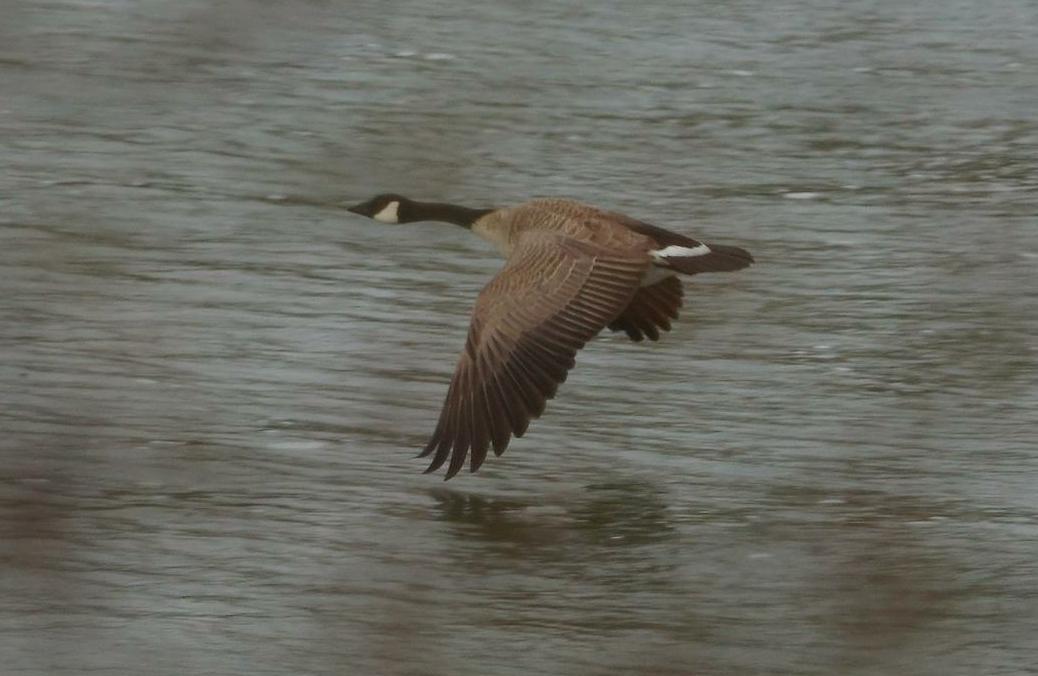


At the first pond, where the river water flows into the pond system, two Mallards were sitting far apart on a log. Being up on a log like this, and because I only saw the female at first, I thought these were Wood Ducks until I looked at them with my binoculars. The pair are standing so far apart with the female half-turned away from the male, one might think they'd just had a spat. You never know I guess.

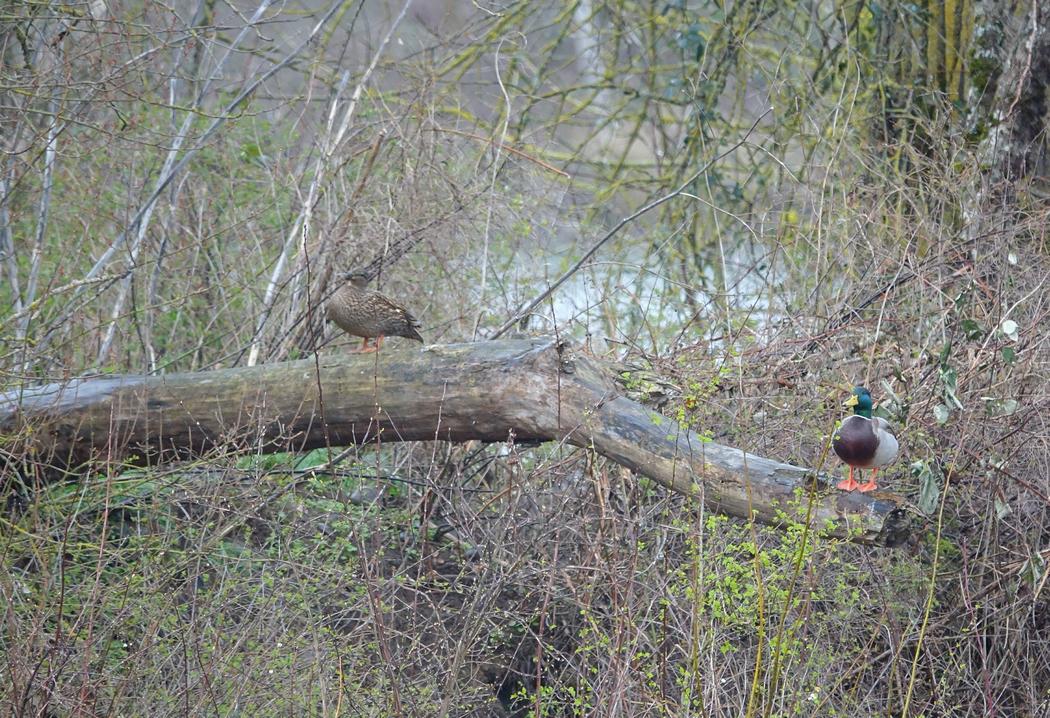
There were Gadwalls seen in several places, always paired up, as most duck species are by this time of year. Gadwalls are not terribly interesting at a distance, and I suppose that is one of the reasons I suppose I didn't appreciate them until I saw them up close at Delta Ponds on a BOGS walk a few years ago. Up close the male Gadwall has exquisitely detailed margins on its feathers along the flanks. The female has nice detail too, but not as intricate.

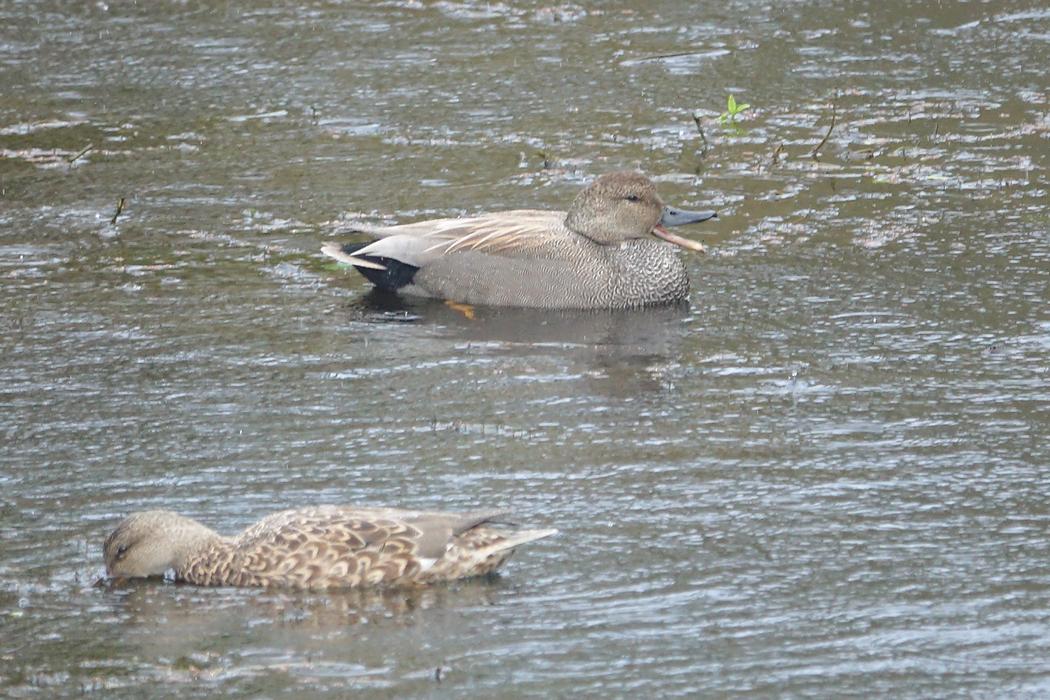

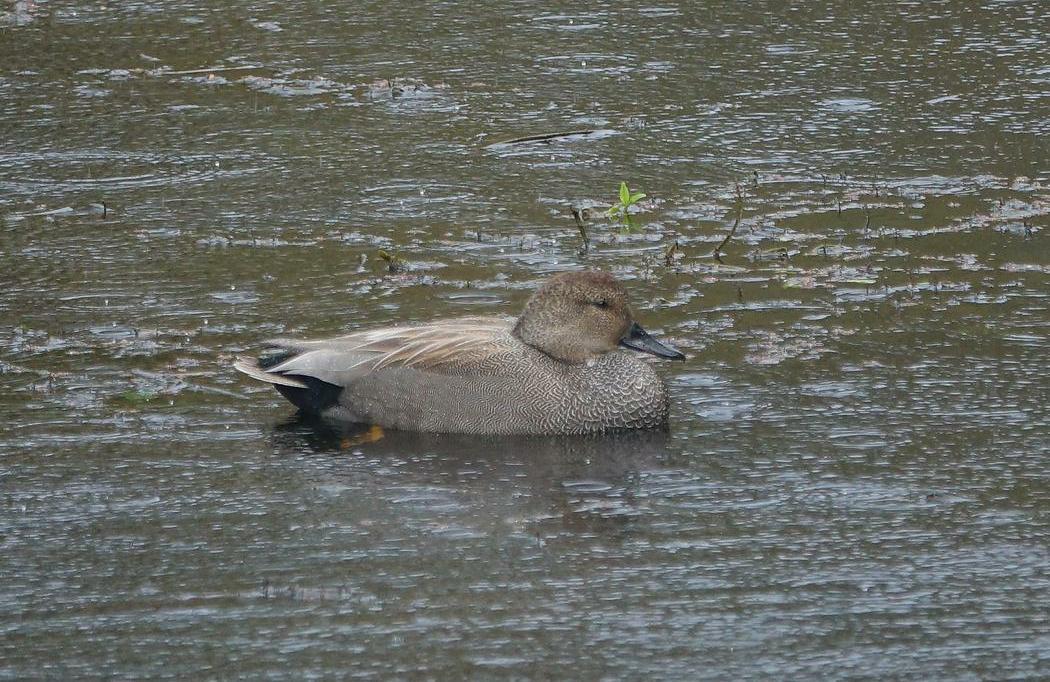
American Coot. Because of the extremely dark feathers and the extremely white portions of the bill, there does not seem to be a perfect exposure for photographing this bird.


American Bald Eagle; immature. As most of you may know by now, the Skinner Butte Eagles did not nest last year and were not attending to the nest this year until only about about 10 - 14 days ago. They are now bringing sticks to the nest and cuddling up to each other. The male has been seen bringing fish to the female. Katie Guske frequents Delta Ponds almost daily and has followed the Skinner Butte Eagles all eleven years. Katie is pretty sure that last year a different female usurped the original female. She says the Eagle pair last year in Jan-Feb began using different trees for their favorite perches; the (likely new) female had an injury to her bill probably from a skirmish with the former (original) female mate. The newly matched pair did not nest last year. This year the behavior of the pair has been different from the previous mating pair.


If you have a facebook account, type "Skinner Butte Eagles" into the search box near the top of the facebook page. Many very fine photographers with excellent equipment are posting pics of our Eagles nearly every day. Here's a thumbnail teaser by photographer John Burke, who just posted this Sunday Mar 11.

Oh! The great blue heron! Steve got excited when he saw how close this Great Blue Heron was to the elevated bike path. When I looked at my photos I said, "My goodness! My camera got the sharpness I bought it for..." The bird was very close- in the channel next to the elevated walkway maybe 12 or 15 feet but the best part was he had his best spring finery on, and it was blowing in the wind gusts. Take a look. it's pretty cool. Maybe the best picture of the day even. There was also a green Wing teal in the channel but I couldn't get really good pictures of it.

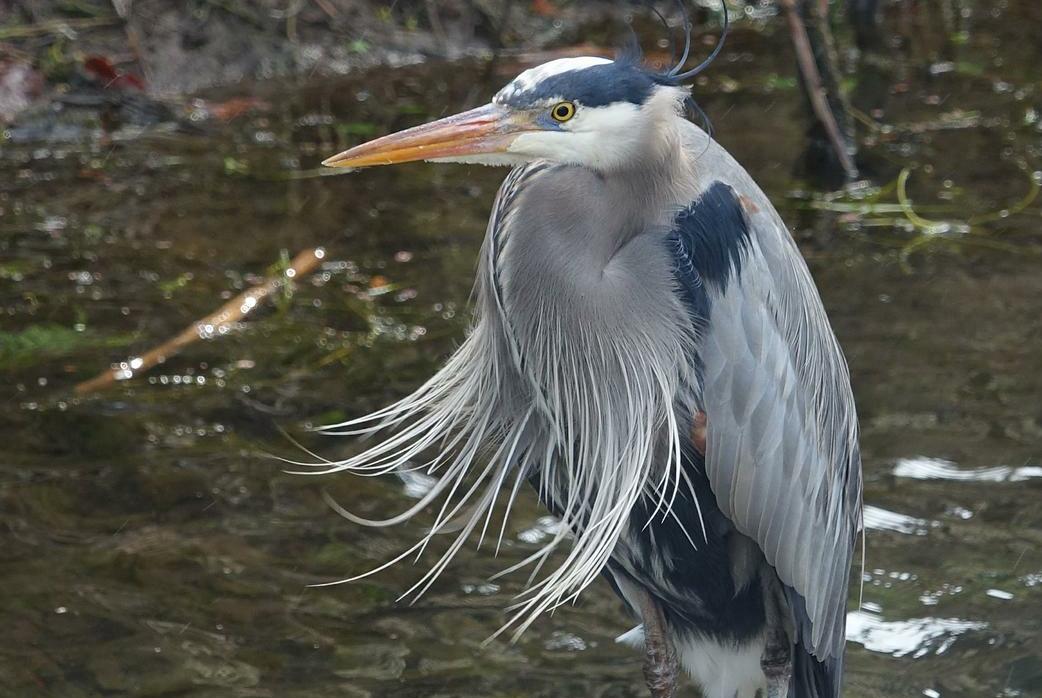

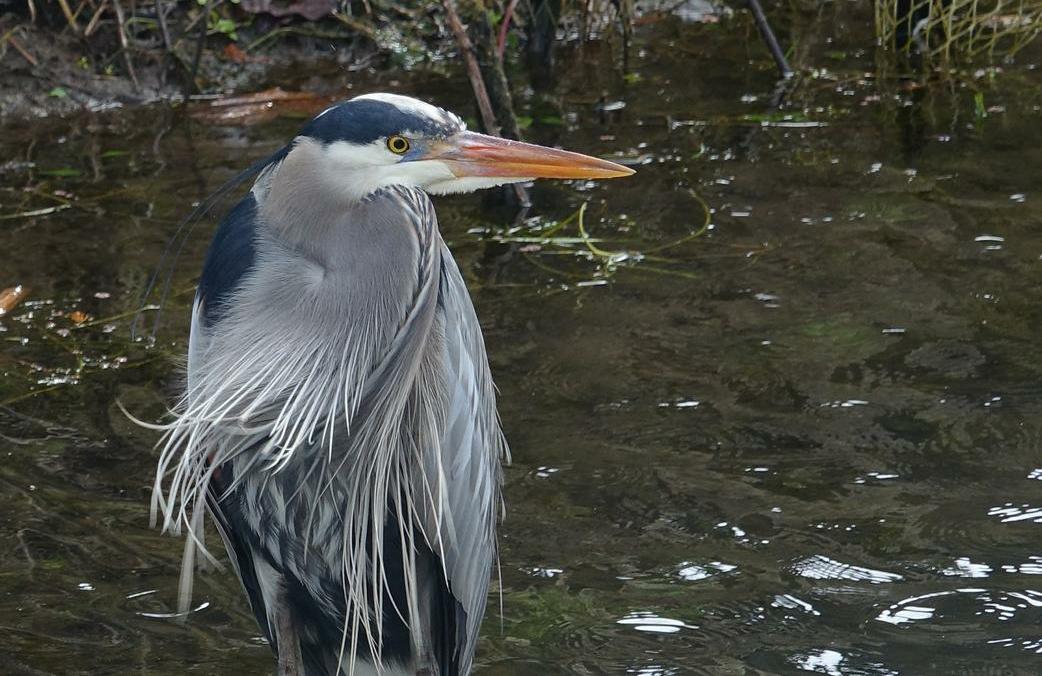
Green winged Teal, male. While being one of our smaller ducks, it is a very attractive one and in fact has become one of my favorite Ducks. I first came to appreciate this species at Delta Ponds also, again a few years ago when I was there alone and some were close to the path near the culverts.

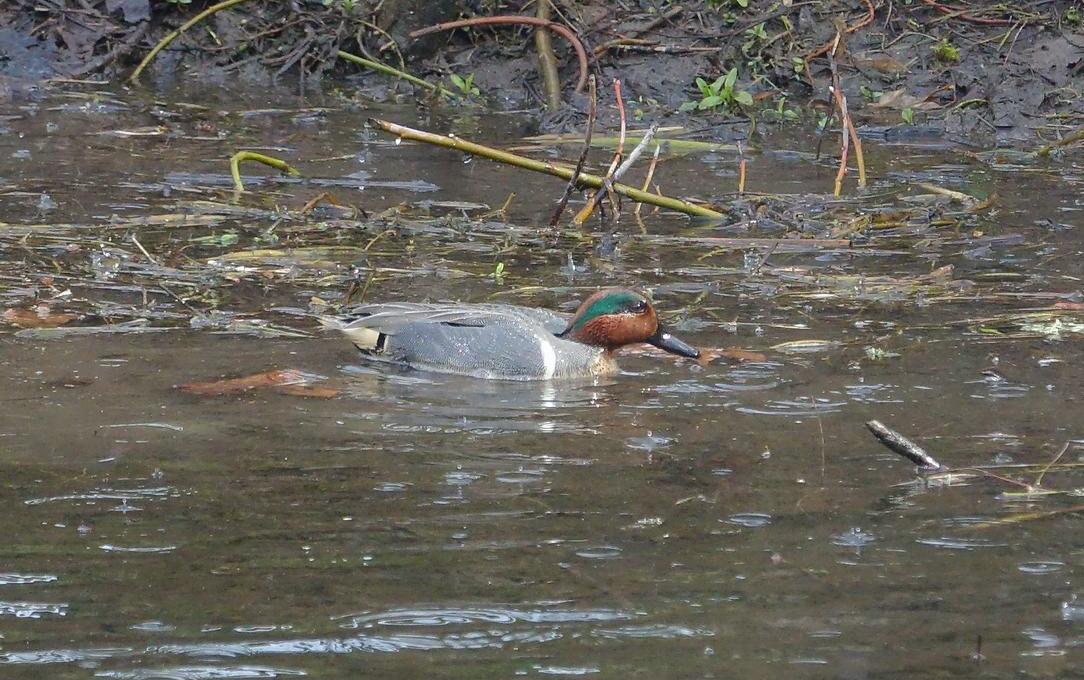

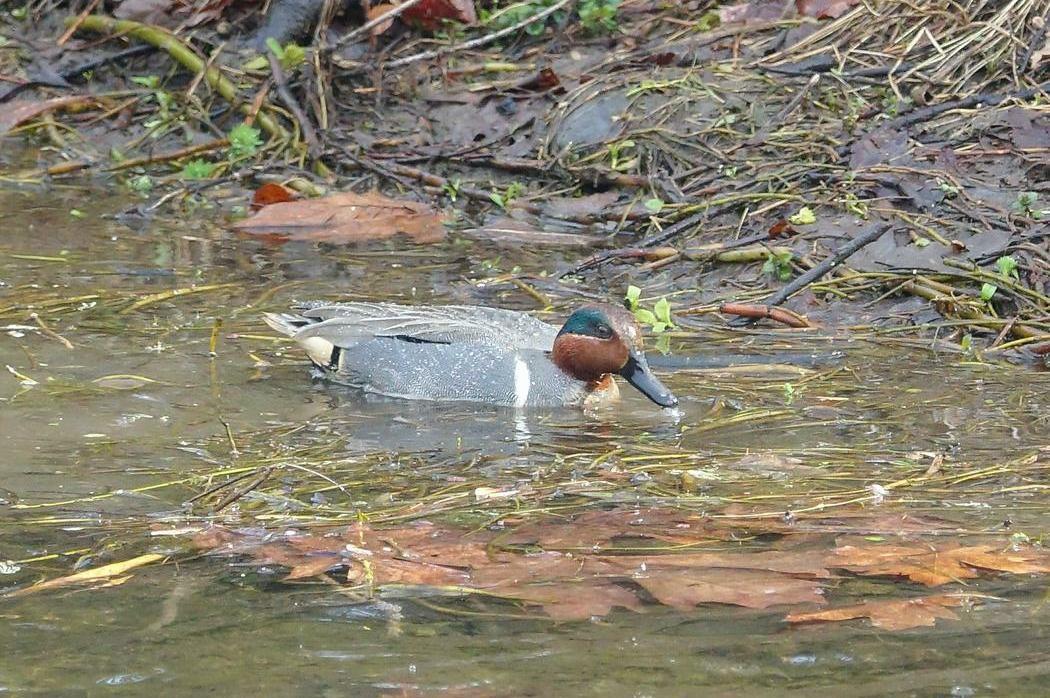
Adult American Bald Eagle. Likely one of the Skinner Butte pair, since they are well known to feed at the ponds nearly every day.

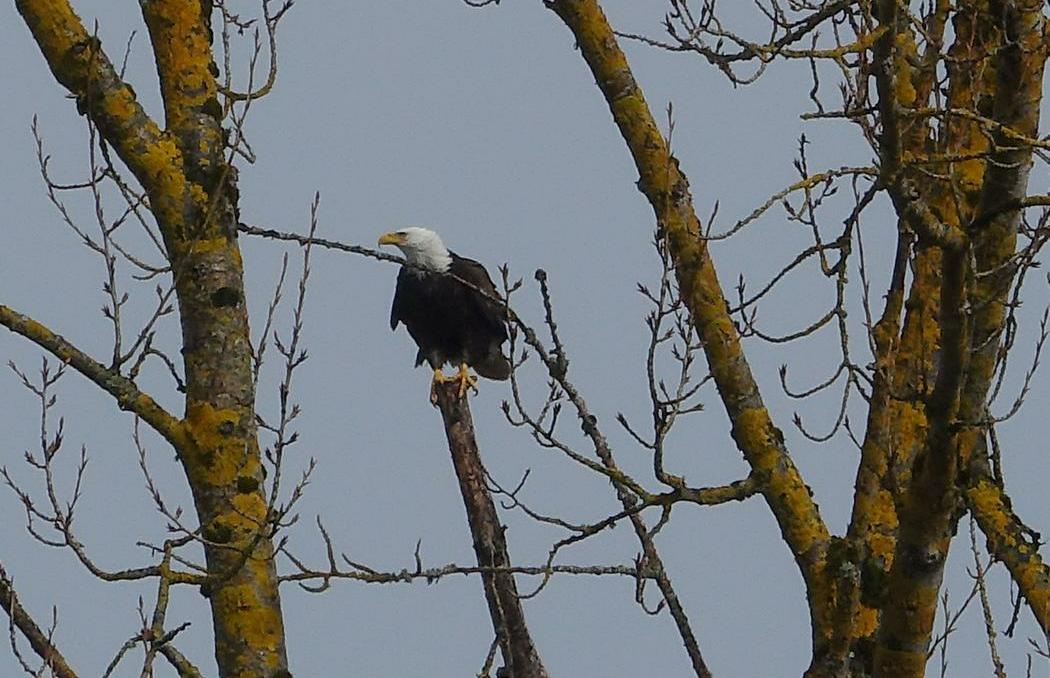
Northern Flickers. There were three of them across the pond. Two can be seen here. I've been noticing that every time we go out we see Flickers in small groups of them, typically three to five. I don't know if this is something they routinely do in Winter or what. I don't think our Flickers migrate so it is probably not groups of migrants. If they are, under the current circumstances, they had better not be here illegally.


Ring-necked Ducks. These are both females.


Wood Ducks

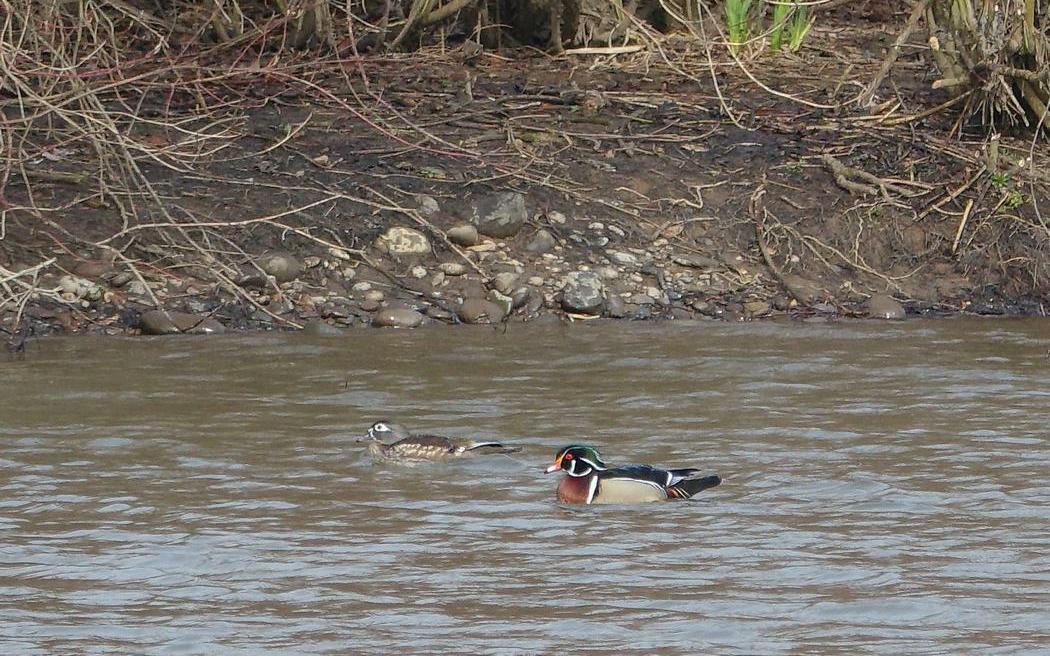
Fresh Beaver gnawings. Scroll down for a closer look.



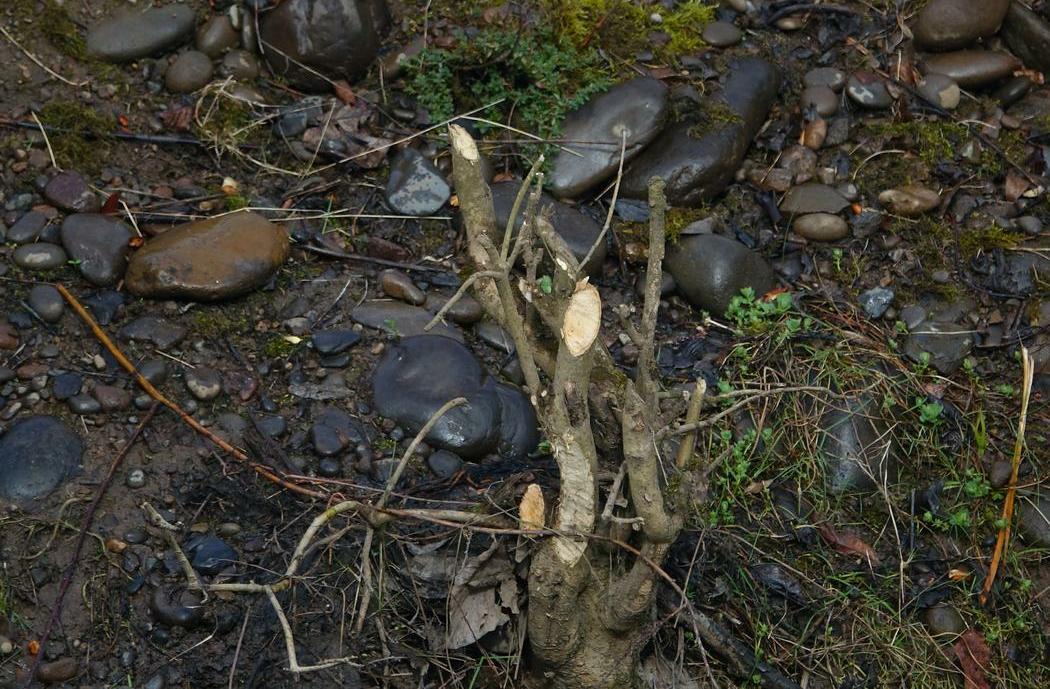
You can tell these are fresh gnawings partly by the very light color of the wood. As it gets weathered it darkens. Also the wood chips are laying right where they fell, in fairly unstable positions. Wind and rain will knock them down soon.

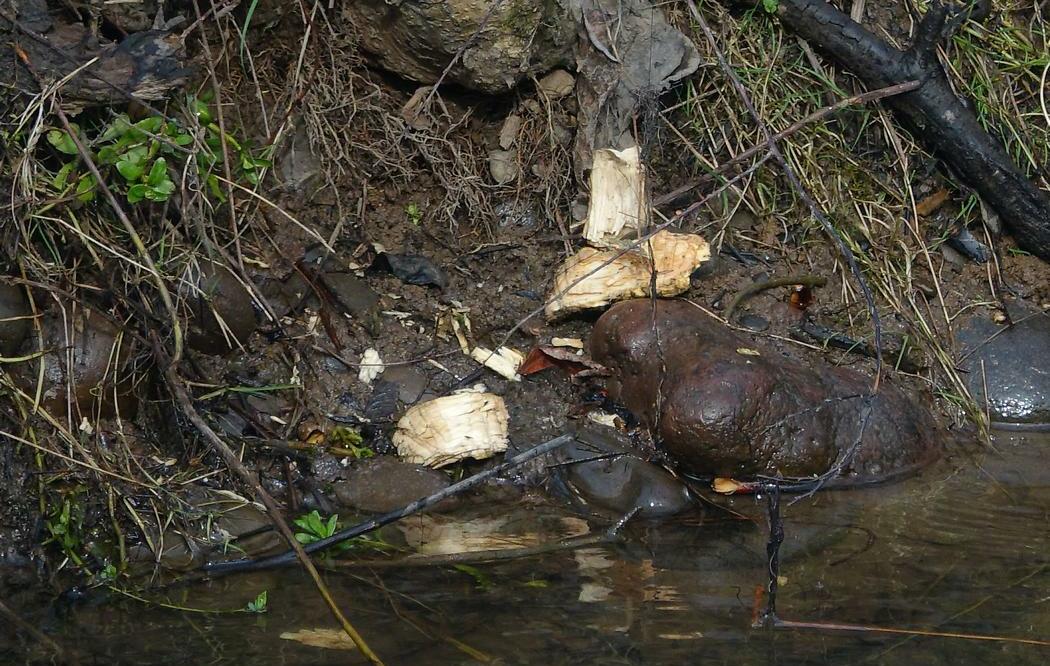
I think I can safely say that people got most excited by an Anna's Hummingbird which put on quite a display for us very close to the path. I think everyone got a good look at it. It stayed around quite a while and even returned again a short while later.

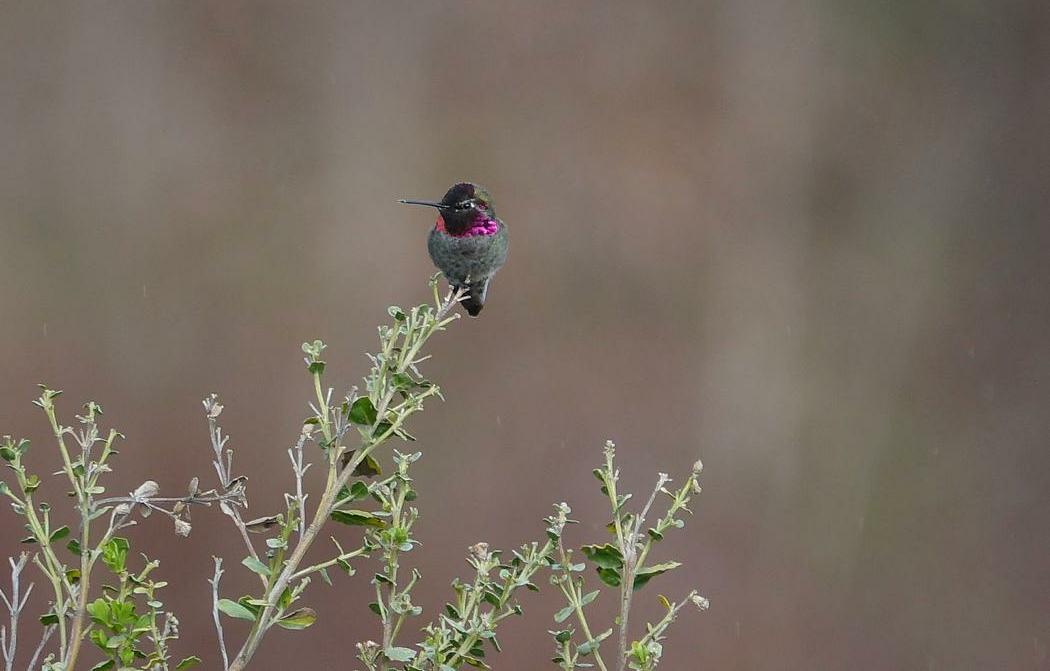



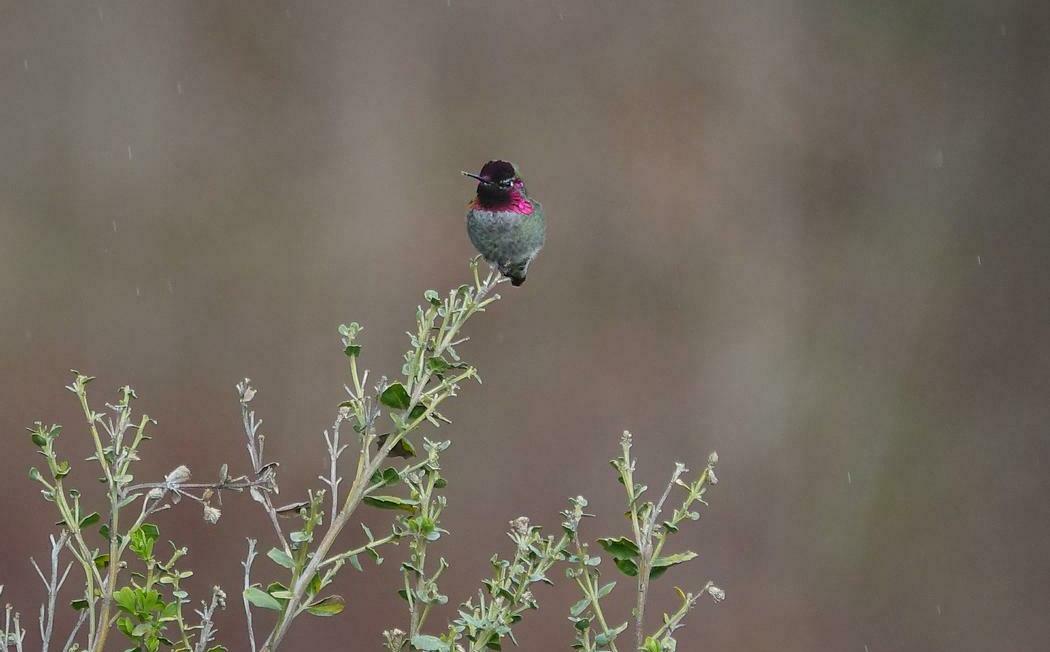


Then came the full monty ... This is when people "Oohed and aahed" the most.

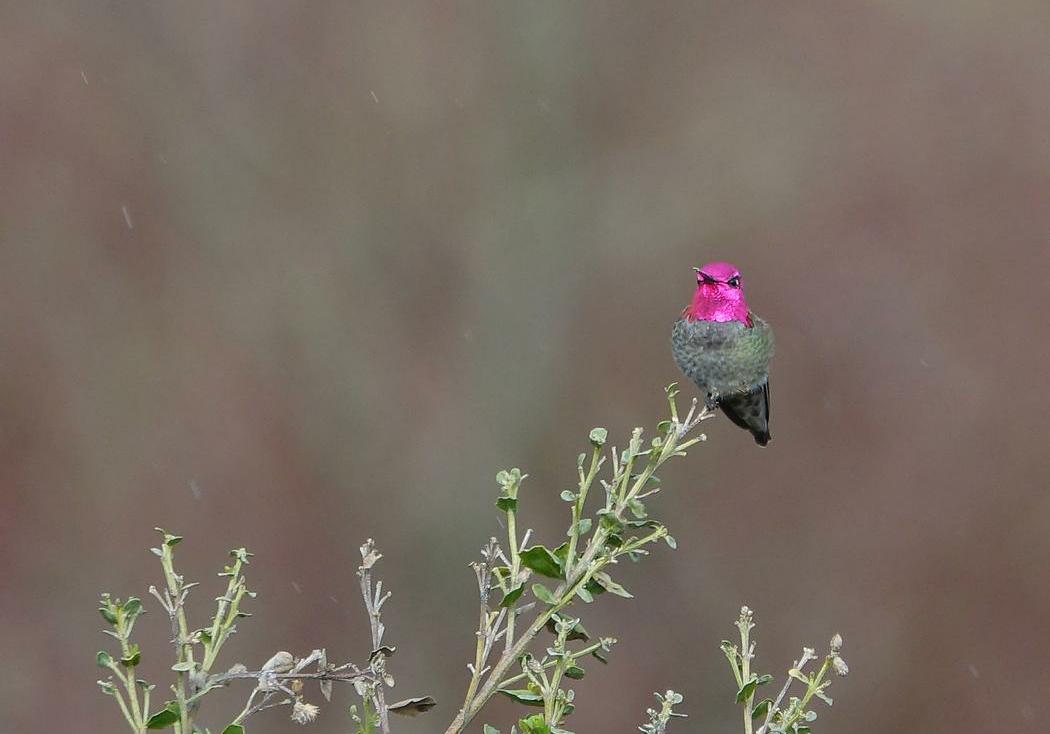
Candid pose; Canada Goose. I wish he'd only cleaned up his bill a little for the photo session.

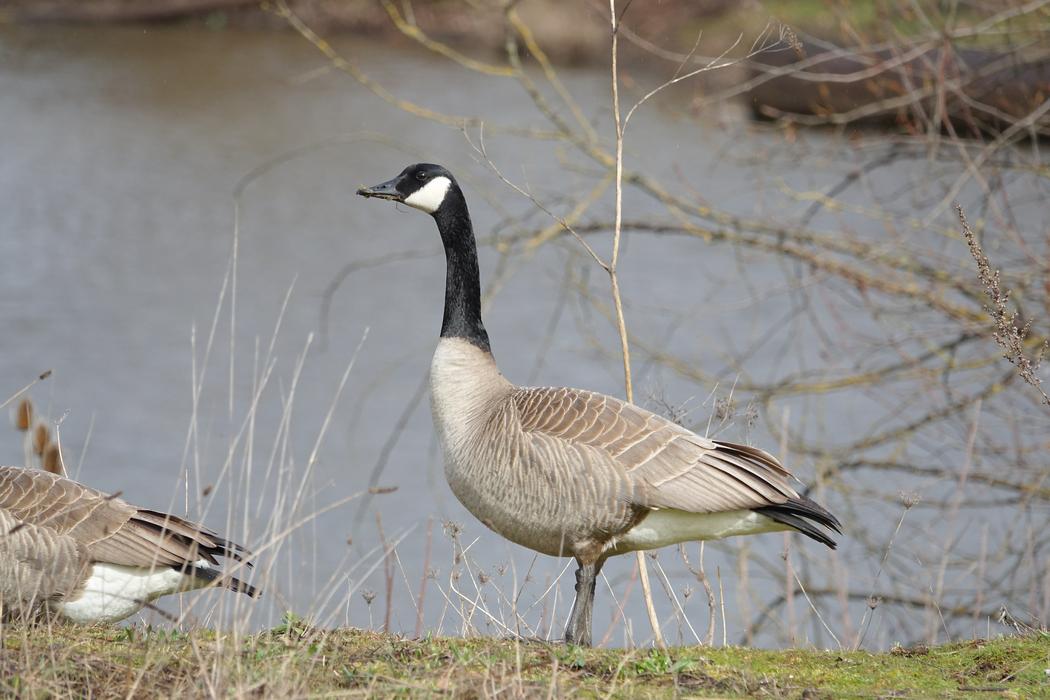
Mallard Ducks. Male showing bright green irridescense.


Another Green winged Teal, showing brighter irridescense because of brighter light.

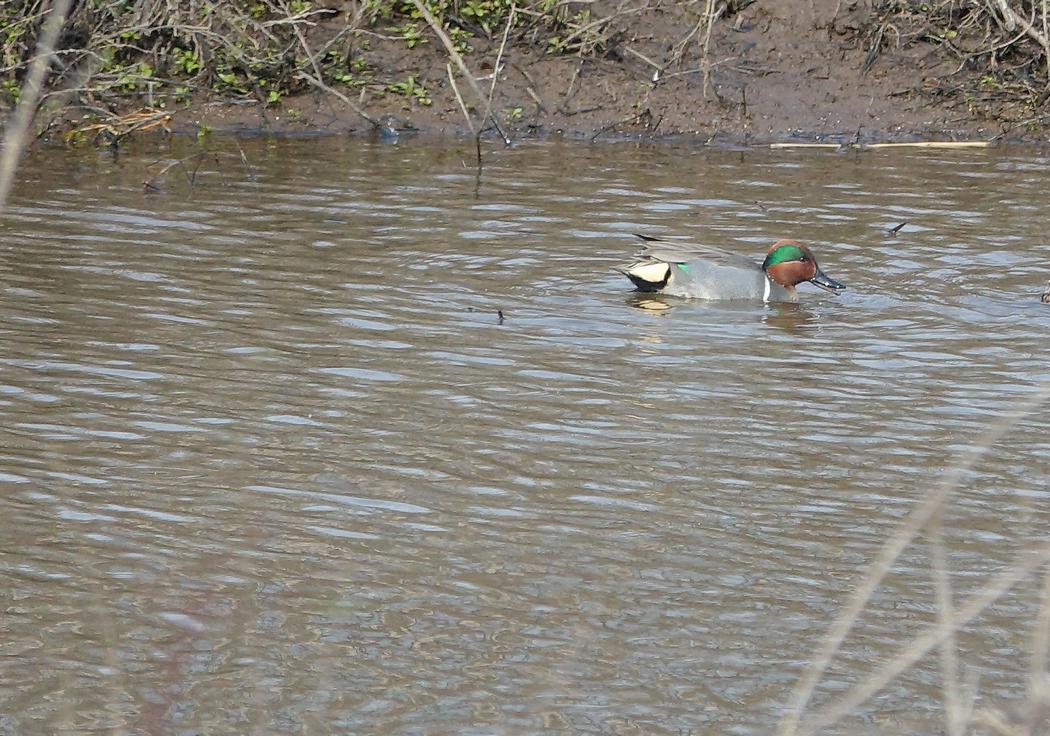
Crow. Intentionally exposed to bring out a little more detail in the black feathers.

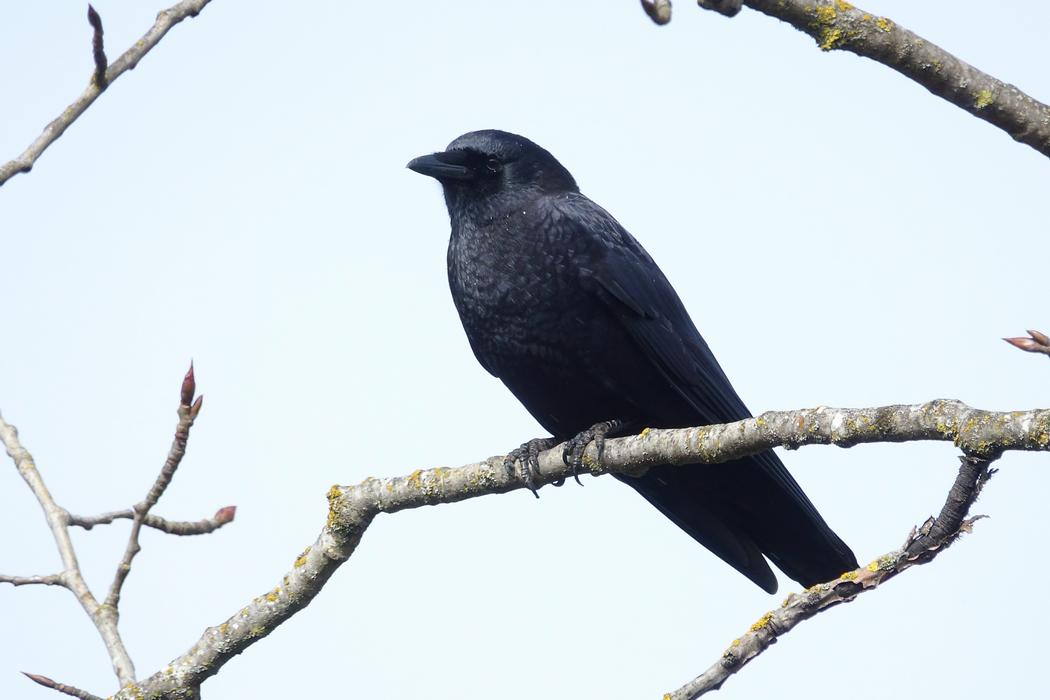
Anna's Hummingbird returns for an encore showing

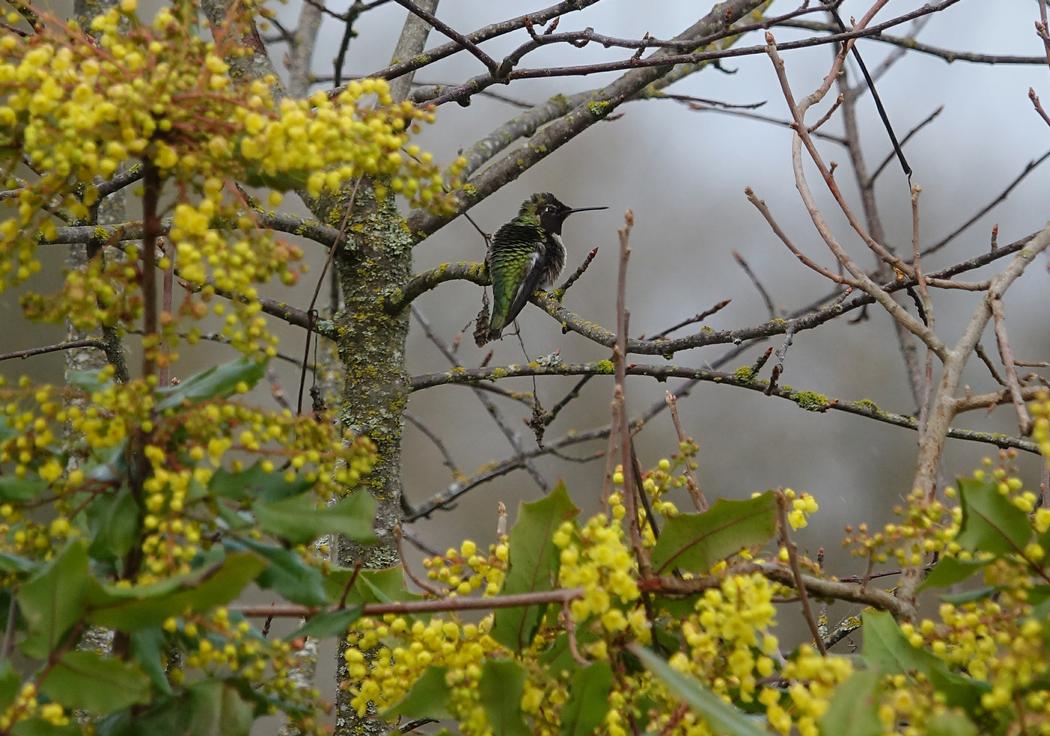
The yellow flowers make a nice frame for this photo


Ring-necked Duck; closer this time. The males have strikingly beautiful white around the tips and base of their bills, proving that black-and-white coloring doesn't have to be boring.

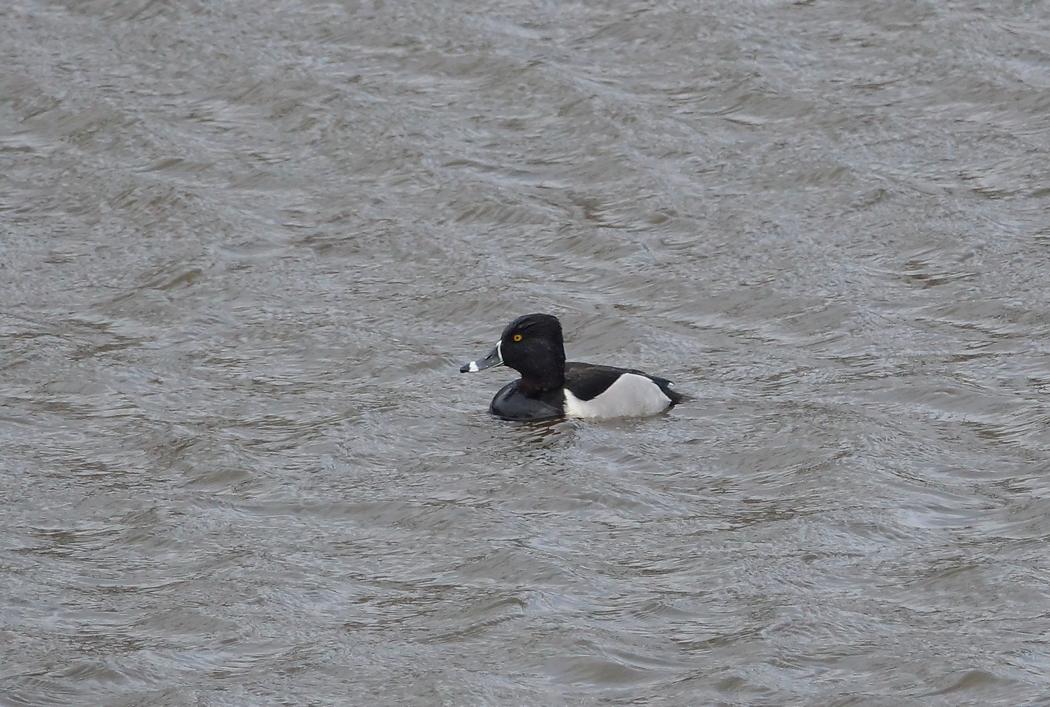
Male Ring-necked Duck and male Gadwall

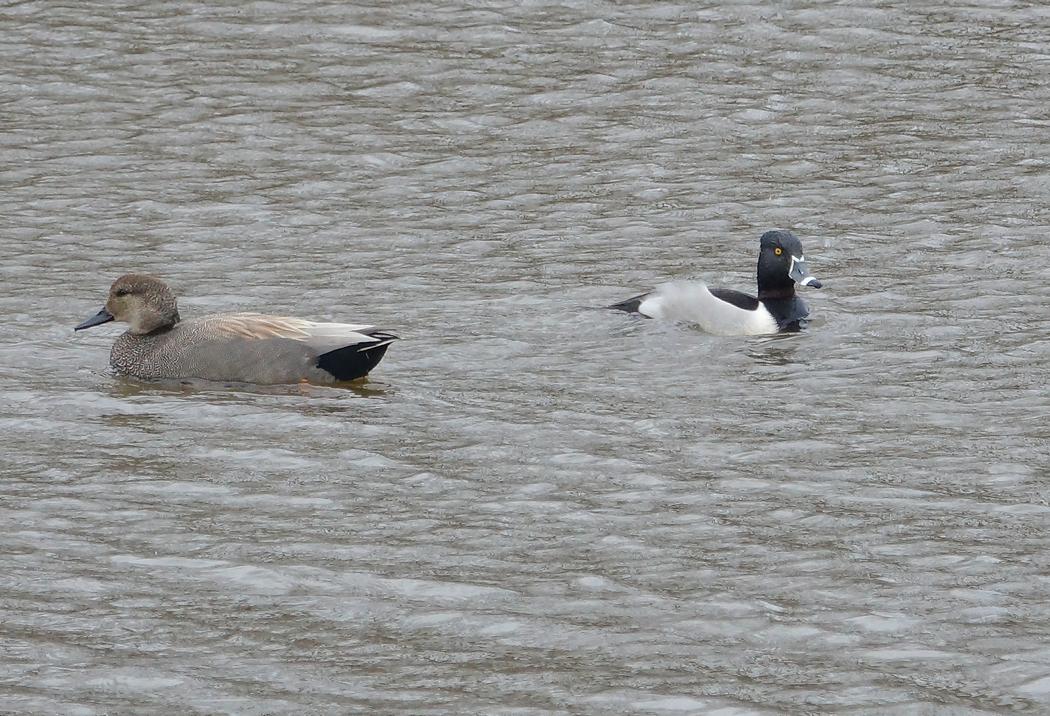
A species of Swallow ... Tree Swallows, Violet Green Swallows and Cliff Swallows were all seen on this walk, although Cliff Swallows strike me as being a little odd to find at the ponds. But the birds know more about their business than I do.
Don and I are both practicing photographing birds in flight. The Swifts and Swallows fly especially fast and manuever constantly, which of course make them very challenging. The biggest problem is getting the camera to focus on them. The bird has to be in the frame long enough for the camera to react. But when the bird is out of focus you can't always tell if it is even in the camera's field of view.

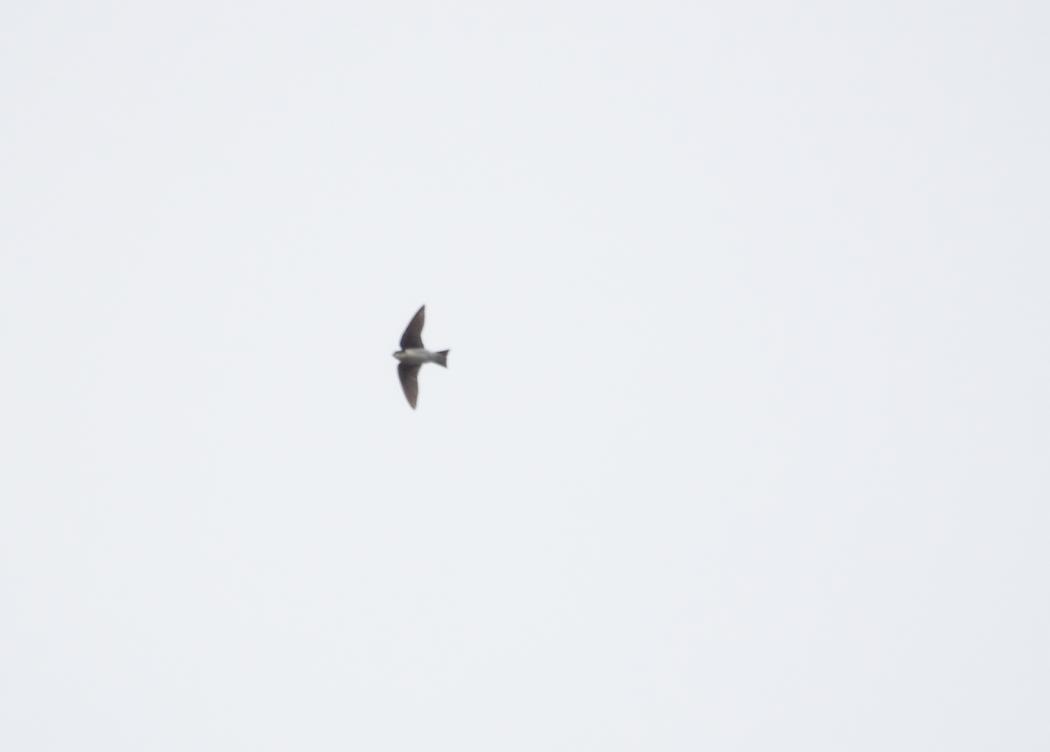
Finally one of the Pied-billed Grebes came in close enough for a better look. At this time of the year they get that fluffy white "bunny-butt".


Yellow-rumped Warbler; framed beautifully by the yellow lichens. This is our most common Winter Warbler, as Rick Ahrens explained a few years ago. My own experience has confirmed that since. Always nice to see on a Winter's day because of their flashes of bright yellow. They usually flit around a lot like flycatchers, but this one took the time to pose nicely for me.




From here we walked at a steady pace all the way back to our cars, ending a fine day of birding with a fine fellowship of birders.
Questions about BOGS? EMAIL: priscilla@blog.priscillanhk.com
Generally if you want to know what is happening next at BOGS, or want to see the latest photos/reports,
you can find these on the HOME page:
http://priscillanhk.com/index.html
Enjoy!
Priscilla